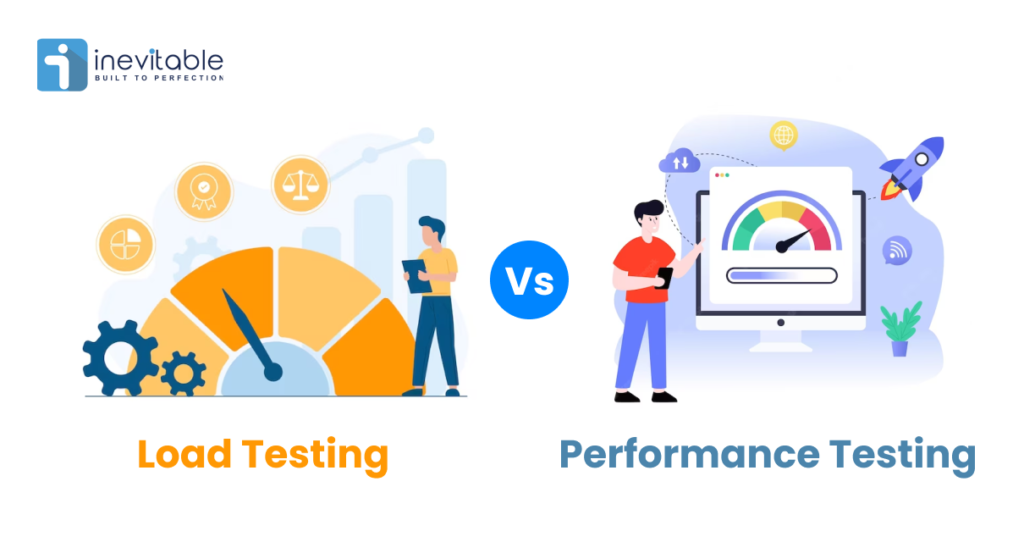
Performance testing and load testing are two crucial terms that you will come across if you are into manual testing of software. A lot of times, aspiring testers get confused between performance and load testing. We have released other blogs where we have discussed what load testing is, in great detail. But in this particular blog, we will dive deeper into understanding the difference between load and performance testing.
To recap, load testing is a specialized form of performance testing where the capacity of the software is measured by simulating multiple users having access to the software application at a given point in time. It is aimed to observe and analyze the behavior of software under a given range of load. It is also done to identify bottlenecks in software.
Performance testing on the other hand is a bigger set of manual testing done to monitor the performance of the system under various metrics like reliability, stability, response time, scalability, etc. It is done to set benchmarks for the product.
Difference Between Load Testing And Performance Testing
Load Testing vs Performance Testing – Let’s have a look at the differences in further more details:
| Criteria | Load Testing | Performance Testing |
| Definition | Refers to specific branches of performance testing where the functioning of the software is analyzed by simulating real-life user scenarios. | Refers to a broader term that includes the practice of various types of non-functional testing |
| Objective | To observe the system behavior when multiple users are active on it. | To observe the system behavior under multiple load conditions. |
| Scope | The scope of load testing is quite narrow. | The scope of performance testing is quite wide. |
| Test Environment | Requires multiple user input | Varies according to the test performed like load testing, stress testing, spike testing, volume testing, etc. |
| Metrics | Response time, robustness, scalability, identifying bottlenecks, etc. | Identify breaking points of the software, look for memory leaks, etc. |
| Tool Selection | LoadUI, NeoLoad, LoadRunner, and other Load Testing Tools. | Apache Jmeter, Silk Performer, Gatling, etc. |
| Focus on Bottlenecks | Yes | Yes |
| User Interaction Simulation | Yes | Depends on the test. |
| Testing Stages | Requirement analysis, Test Script production, Test Execution, Result Analysis, Re-execution. | Determine test scenarios, set required metrics, test planning, test designing, test execution, and result analysis. |
| Scaling Considerations | Network Protocols, Mixed Application Traffic, Cross Testing, etc. | Response Time, CPU Usage, Memory Usage, etc. |
| Resource Utilization Analysis | No | Yes |
| Common Challenges | Not Considering User Think Time, Utilizing Hardcoded or heavy-coded test script, etc. | Choosing the wrong toolset, setting up inaccurate test scenarios, not having flexible time and budget, etc. |
| Real-world Applications | Required | Not Required |
| Integration with CI/CD | Not Required | Required |
When to Use Load Testing?
Load testing should be early on during the software developmental stage. It should be done regularly to ensure that the software is built strong, robust, and error-free. It must especially be done right after new features or updates are implemented into a software application. This way you can ensure that the software’s overall performance is not affected due to the new updates.
When to Use Performance Testing?
The best time to perform performance testing is right after running functional testing. Once all the functional tests are done, performance testing is done to validate the speed of the system, stability, responsiveness, etc. It helps get an understanding of how software reacts to a growing number of traffic.
Summary
So in conclusion we can say that Performance testing is nothing but an umbrella term for various manual testing practices. Whereas, load testing is a particular type of performance testing that determines the capabilities of a software when accessed by various users. However, the most significant difference between performance and load testing is that performance testing checks the performance of the software, and load testing validates its operational capabilities.




